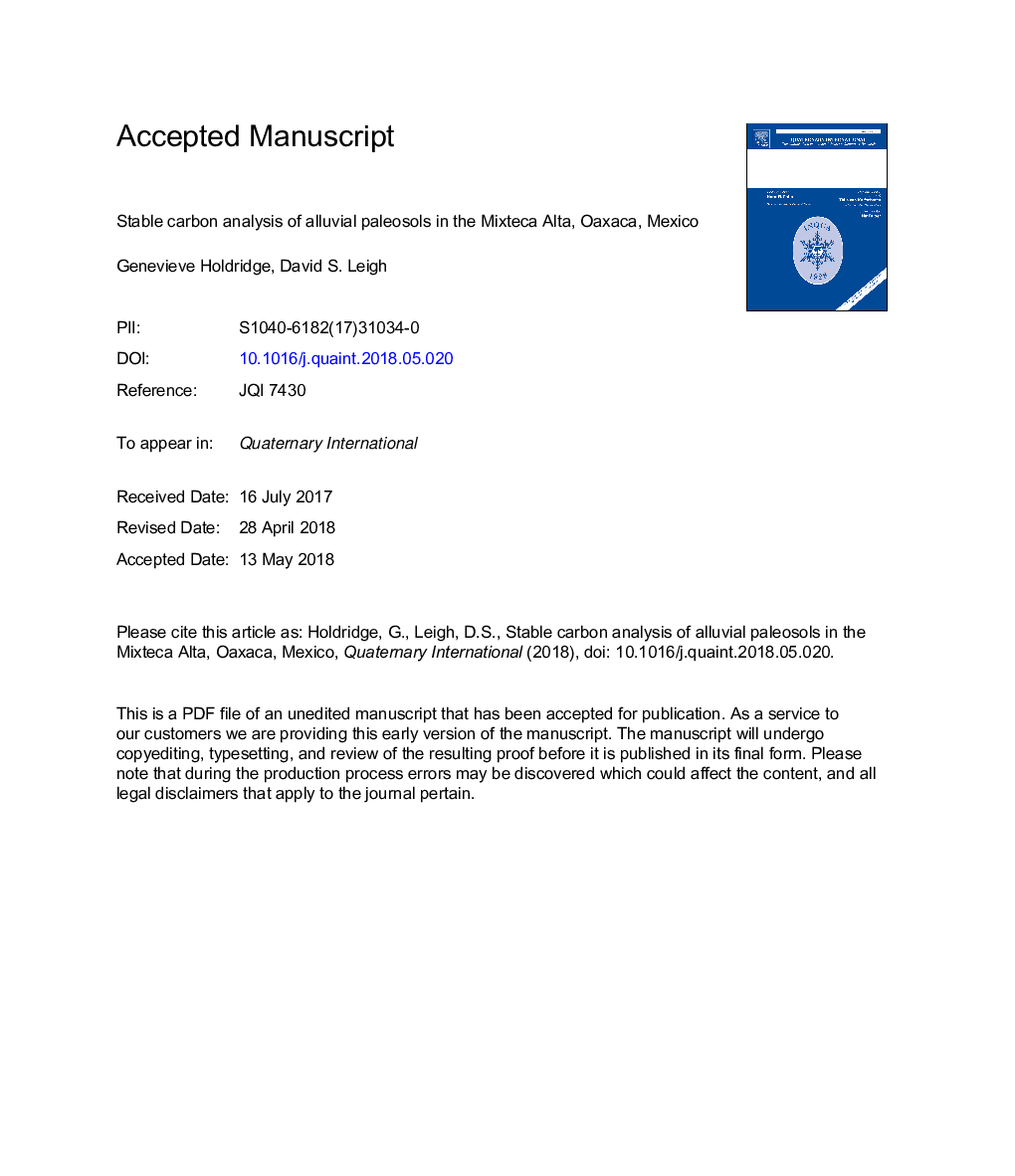| Article ID | Journal | Published Year | Pages | File Type |
|---|---|---|---|---|
| 8942520 | Quaternary International | 2018 | 58 Pages |
Abstract
We examine δ13C values from soil organic matter (SOM) from the Culebra, Inguiro and Verde watersheds (Verde data are from Mueller et al., 2012) located in the Mixteca Alta from the terminal Pleistocene to the present. The SOM δ13C values were compared against local paleosol data and other paleoenvironmental proxies from central and southwestern Mexico. The paleovegetation implications of the SOM reflect overall changes in paleoclimate from the terminal Pleistocene through the middle Holocene. The late Holocene stable carbon isotope values varied widely, suggesting that human activities such as agriculture affected the paleoenvironment and paleovegetation in the study area, similar to findings in central Mexico. Values of δ13C show a significant rise between 3500â¯cal BP and 1250â¯cal BP, with one notable cluster of enriched values corresponding to the Post-Classic cultural period (local Natividad phase, 1250-500â¯cal BP), when the local population is thought to have peaked over 100,000. Since the late Formative period (local late Cruz phase, starting â¼3500â¯cal BP), lama-bordo (i.e., sediment check-dams) and agricultural terrace constructions were important for land use management and agriculture, which became widespread by the Post-Classic period. The highly enriched values associated with widespread agricultural structures suggest the increased importance of maize cultivation, and potentially the increased significance of CAM plant management, such as maguey and nopal during the late Holocene.
Related Topics
Physical Sciences and Engineering
Earth and Planetary Sciences
Geology
Authors
Genevieve Holdridge, David S. Leigh,
